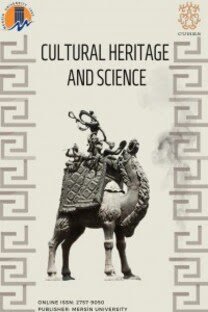Edirne New Palace excavations (2018-2021)
Edirne New Palace excavations (2018-2021)
The palace serves as a legitimacy tool for states that operate under a monarchical system of administration and for the dynasty holding power. It is the residence and administrative location of the highest ruler of the state. Thus, the edifice has the ability to depict the period and civilization it embodies in the most elevated manner. The palace has been a crucial emblem of Ottoman society for 600 years, spanning the inception of the civilization. Although Bursa Bey Palace and Edirne Old Palace, erected in Ottoman capitals, have not withstood the passage of time, Edirne New Palace acted as a blueprint for Istanbul's Topkapı Palace, serving as an efficient residence until the final days of the Ottoman Empire. The palace now stands deserted as a result of the Ottoman-Russian war and subsequent destruction. This study focuses on excavations carried out in 2020 to uncover its heritage, which encompasses Ottoman architecture and art from the II. Murad period to the late 19th century in a diverse manner, and to reintroduce certain components into contemporary Turkish cultural life. The article presents the land applications and data gathered during the excavation period.
Keywords:
New Palace, Ottoman, Archeology Presentation Room, Iron Door,
___
- Osman, T. R. (1989). Edirne Yeni Sarayı, Yayına Haz. Süheyl Ünver, TTK Yayınları, Ankara
- Hasan, A. C. (2020). 1752 Edirne Depremi, Kitapevi Yayınları, İstanbul
- Eyice, S. (1994). “Edirne”, İslam Ansiklopedisi, Türkiye Diyanet Vakfı Yayınları, İstanbul, 10, 432-433
- Badi, A. (2014). Riyaz-ı Belde-i Edirne (20. Yüzyıla kadar Osmanlı Edirne’si), c. 2/1, Yayına Hazırlayanlar Niyazi Adıgüzel, Raşit Gündoğdu, Trakya Üniversitesi Yayınları, İstanbul
- Yıldırım Ş. (2004). Makedonya Kulesi Kurtarma Kazısı 2003, 14. Müze Çalışmaları ve Kurtarma Kazıları Sempozyumu, Nevşehir, 243-250.
- Kocaaslan, M. (2014). Düşmânlarımıza Bâ’is-i Helecân Vermek: Edirne Yeni Saray’ı Tamir Etmek. Belleten, LXXVIII, 281 ,149-166
- Sayger, C., & Desarnod, A. (1834). Album d'un voyage en Turquie fait par ordre de sa majesté l'empereur Nicolas 1er en 1829 et 1830, par C. Sayger & A. Desarnod, Imprimérie de Firmin Didot Frères Paris,
- Eldem, S. H. (1974). Köşkler ve Kasırlar. Cilt I-II, İstanbul: Devlet Güzel Sanatlar Akademisi, 11
- Özer, M., & Dündar, M. (2019). Edirne Yeni Sarayı Kum Kasrı Hamamı ve Aşçılar Hamamı. Akdeniz Sanat Dergisi, 13, Özel Ek Sayı (21. UOTK Sempozyumu Bildirileri) Antalya, 571-584.
- Yayın Aralığı: Yılda 2 Sayı
- Başlangıç: 2020
- Yayıncı: Mersin Üniversitesi
Sayıdaki Diğer Makaleler
Architectural sustainability with cultural heritage values
Edirne New Palace excavations (2018-2021)
Yavuz GÜNER, Gülay APA KURTİŞOĞLU
Systematic analysis of the digital technologies used in the documentation of historical buildings
Fatma Zehra ÇAKICI, Rabia KAÇDİ
Exploring structural deterioration at historical buildings with UAV photogrammetry
Emine Beyza DÖRTBUDAK, Şeyma AKÇA, Nizar POLAT
Research on the change of Ankara Ulus City Center identified with its historical texture
